Travel Guide for THE BEST MUSEUMS IN PITTSBURGH - Pittsburgh Purple Travel Guide
We show you the best and most important museums in the Pittsburgh area and have lots of photos to help you decide which museums you want to visit.
Pittsburgh has lots of museums. On this page I am focusing on the most important and best museums in the Pittsburgh area. The majority are located in or near the downtown and Oakland areas, which makes it easier for you to see several museums in one or two days.
CARNEGIE SCIENCE CENTER
Located near the confluence where the Allegheny and Monongahela rivers for the Ohio, is Pittsburgh’s most visited museum. The Carnegie Science Center, which was built in 1991, is a family oriented science museum mostly geared to children, but there is plenty to see and do for adults too. It is one of Pittsburgh’s four Carnegie Museums.
The major attractions are:
- BodyWorks: This exhibit is geared towards kids and its interactive displays and demonstrations of our blood, bones, brains, digestive system, heart, intestines, muscles, nerves, and senses teach how the human body works.
- Buhl Planetarium: "To Infinity & Beyond!". The Buhl is, as you may expect, a full-dome-experience planetarium and observatory which brings you closer to the stars and planets from their comfortable chairs, but it is actually a lot more. They have fantastic laser & Rock’n Roll shows.
- Changing exhibitions: At the time of me writing this article, the exhibition “Mummies of the World” was extended do to popular demand.
- Highmark SportsWorks®: More than 20 interactive exhibits help you understand the experience of sports with the laws of science. This is for every age group!
- NETL Energy Zone: Interactive exhibits for kids to understand electricity.
- Rangos Giant Cinema: Pittsburgh’s movie theater with the (by far) biggest screen (70ft x 38ft), showing 2D and 3D movies and films in crystal clear picture quality and sound from 45 speakers.
- Roboworld®: Advertised as "the world's largest permanent robotics exhibition!". Over the last years, Pittsburgh has become a hotspot of robotics research & development and commercialization. So, this exhibition is a logical consequence of this trend. In dozens of interactive exhibits, you can learn how robots (bots) sense, think, and act.
- SpacePlace: more interactive kids displays teach how our planet, the solar system, and the universe work. There is also a replica of an International Space Station Module.
- Miniature Railroad & Village®: A must-see in the Carnegie Science Center since 1919. Millions of visitors have enjoyed the miniature railroad which has handcrafted replicas of regional landmarks, like Forbes Field. Fallingwater, Mister Rogers’ Neighborhood House, Primanti Bros., Punxsutawney Phil and many more.
- USS Requin: Built in 1945, the USS Requin reached Pearl Harbor to join the Pacific Fleet in late July 1945. Two weeks after her arrival and three days before she was to begin her first war patrol, World War II ended. She was then converted to a radar picket submarine. After 14 years of service around the world, she was converted in 1959 into an attack submarine with the hull classification symbol SS-481, a role in which she served until decommissioning until 1968. She then served as a non-powered Naval Reserve training vessel in St. Petersburg, FL until 1971. She then became a tourist attraction until she was sold to the Carnegie Science Center and brought to Pittsburgh where it is now used as a memorial and museum exhibit.
- Works Theater: Various live science demonstration shows featuring chemistry and physics experiments from kindergarten to 12th grade students.
ANDY WARHOL MUSEUM
The Andy Warhol Museum, opened in 1994 in a converted industrial warehouse, is one of Pittsburgh’s four Carnegie Museums and the largest museum in North America dedicated to a single artist - Pittsburgh-born pop art icon Andy Warhol.
The museum’s exhibits are featured on 7 floors, consisting of 17 galleries, 77 sculptures, 900 paintings, over 1,000 published unique prints, almost 2,000 works on paper, 4,000 photographs, and more than 4,300 films and videotaped works.
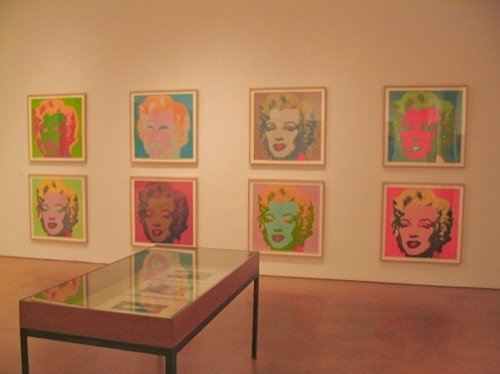
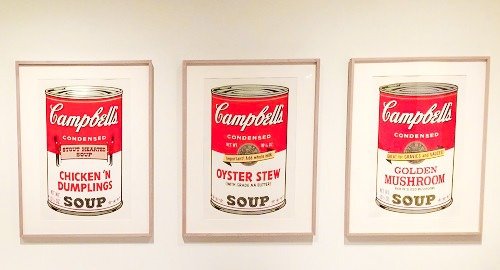


MATTRESS FACTORY
Located in a previous Stearns & Foster mattress warehouse and converted into a contemporary art museum and experimental lab which opened in 1977, the Mattress Factory is a pioneer of site-specific installation art featuring works by resident artists from around the world. At the time of writing, there are permanent exhibitions of 18 artists and 3 temporary exhibitions.




RANDYLAND
Randyland is an “outsider art” museum and one of the most colorful art landmarks in the US. It is named after its creator Randy Gilson. Randyland is a colorful museum of happiness. Admission is free and you have a good chance of meeting energetic and friendly Randy when you visit.
Long story short: If you like color and happiness, then a visit here will make you happy. Is it a Pittsburgh must-see? No, it is not, even though Anthony Bourdain in “Parts Unknown” said that Randyland is essential for the "Perfect Day in Pittsburgh". You be the judge.




SENATOR JOHN HEINZ HISTORY CENTER
The Heinz History Center, an affiliate of the Smithsonian Institution, is Pennsylvania’s largest history museum. On six floors, its exhibitions feature more than 40,000 artifacts of the history of Western Pennsylvania. Founded in 1879, the museum was moved to its current location at the beginning of the Strip District in 1996.
The museum houses permanent and temporary exhibits; the permanent exhibitions are:
- Mister Rogers’ Neighborhood - see original set pieces and artifacts
- Pittsburgh: A Tradition of Innovation - celebrate 250 years of Pittsburgh innovations
- Heinz - experience 150 years of the H.J. Heinz Company
- From Slavery to Freedom - 18th century Africa to 21st century Western PA
- Special Collections Gallery - Western PA’s unique blend of cultures and people
- Glass: Shattering Notions – before becoming the Steel City, Pittsburgh was America's Glass City
- Eyes of Pittsburgh – photographs from Pittsburgh’s newspapers
- Discovery Place and Kidsburgh – for kids to learn about Pittsburgh history.
- Clash of Empires: The British, French & Indian War, 1754-1763
- Rediscovering Lewis & Clark: A Journey with the Rooney Family
- SmartSteps – take the steps and discover colorful murals with health & wellness tips, and facts about Pittsburgh’s history
- Senator John Heinz: A Western Pennsylvania Legacy – learn about his life, public service, and contributions to arts and culture, the environment, economic development, and society
- The Prine Collection of Woodworking Planes – see more than 200 woodworking planes from the early 19th century in Western PA
The Historical Society of Western Pennsylvania, which manages the Heinz History Center, also manages the “Western Pennsylvania Sports Museum” and the “Detre Library & Archives” (both located inside the Heinz History Center), and the offsite attractions of the Meadowcroft Rockshelter and Historic Village and the Fort Pitt Museum.
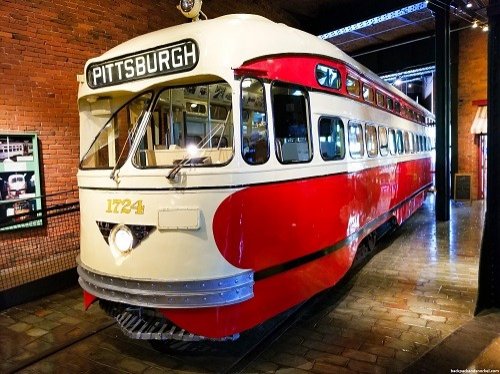



CARNEGIE MUSEUM OF NATURAL HISTORY
The Carnegie Museum of Natural History was founded in 1896. It is in the top 5 natural history museums in the US and its collection holds approx. 22 million specimen, of which about 10,000 are on display. The museum has the world's largest collection of Jurassic dinosaurs. You can see the world's first specimen of a Tyrannosaurus rex, one of the very few fossil skeletons of a juvenile Apatosaurus, and a fairly recently identified species of oviraptorosaur, called Anzu wyliei.
But the star of the collection and mascot for the museum is Dippy!
Dippy is a composite Diplodocus skeleton and probably the single most famous single dinosaur skeleton in the world. This is because Andrew Carnegie donated numerous plaster casts of the skeleton, which is on display since April 1907, to major museums around the world in the early 20th century and they are still on display. All are copies of Pittsburgh’s Dippy.
In 1999, for the 100th anniversary of the discovery of Dippy, a fiberglass sculpture of Dippy was unveiled in front of the Carnegie Institute and Library complex. It weighs 3,000 pounds, is 22ft tall and 84ft long. Dippy has been known to carry the Pittsburgh Steelers’ “Terrible Towel” and a mask during the Covid-19 pandemic.
Dippy is sometimes called the "star-spangled dinosaur", as it was discovered on Independence Day.

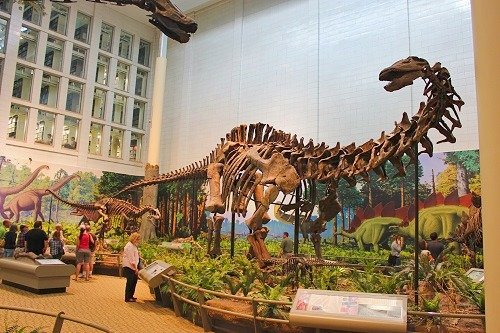

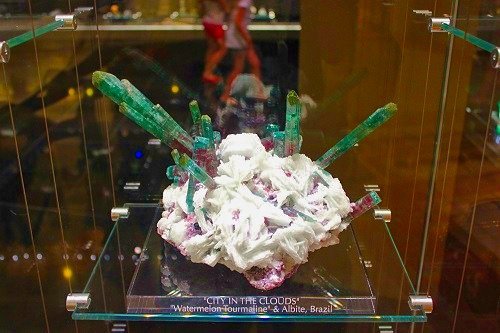
CARNEGIE MUSEUM OF ART
Founded in 1895, the museum collects contemporary art, including film and video works under the Andrew Carnegie’s vision to showcase the "Old Masters of tomorrow". It is the first museum in the US with a primary focus on contemporary art. The collection has approx. 35,000 works and about 1,800 are on display.
The Carnegie Museum of Art has these departments:
- Decorative Arts and Design
- Film and Video
- Fine Arts
- Heinz Architectural Center
- Modern and Contemporary Art
- Photography
- Teenie Harris Archive - over 70,000 negatives by photographer Charles "Teenie" Harris
There are ongoing activities for kids like “ARTventures Drawing Game” and “Story Sundays” and some activities that need pre-registration.
SOLDIERS AND SAILORS MEMORIAL HALL AND MUSEUM
Soldiers and Sailors is the largest memorial in the United States dedicated solely to honor all branches of military veterans and service personnel.
Originally conceived in 1905 by the Grand Army of the Republic, a national organization composed of Civil War veterans, to honor American Civil War veterans, it was built on the army mustering ground during the Civil War. The Memorial houses a vast collection of rare and personal items from the Civil War to today’s military conflicts. In 1963, the museum established the "Hall of Valor" which honors individual veterans from the region who went above and beyond the call of duty. It now has over 600 honorees.
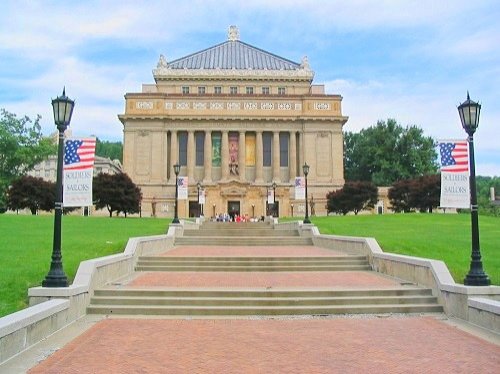
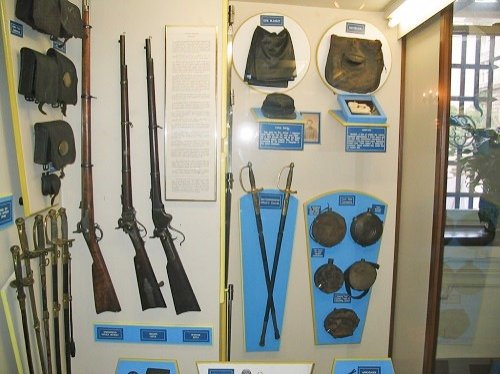


THE FRICK
Henry Clay Frick (1849–1919) was an industrialist, union buster and art collector. “The Frick” comprises several historic buildings and museums centered around the Frick family's 19th century home known as "Clayton" on 5.5 acres (22000 m2). Admission is only required for Clayton tours and special exhibitions.
The house was built in the 1860s and the Fricks purchased it shortly after their marriage in 1881, modified it and renamed "Clayton". After further remodeling in 1892, it became the Fricks' primary residence from 1883 to 1905 when the Fricks moved to New York City. In 1981, daughter Helen Clay Frick permanently returned to Clayton where she resided until her death in 1984. Thanks to her the Clayton opened to the public in 1990, and other parts and museums were later established and opened to the public, too.
The area includes:

- Frick Art Museum
- Car and Carriage Museum
- Frick children's playhouse
- Greenhouse
- Clayton
- the Clayton – main residence with 19th Century paintings by Jules Cazin, Jean-François Raffaëlli, and Anton Mauve
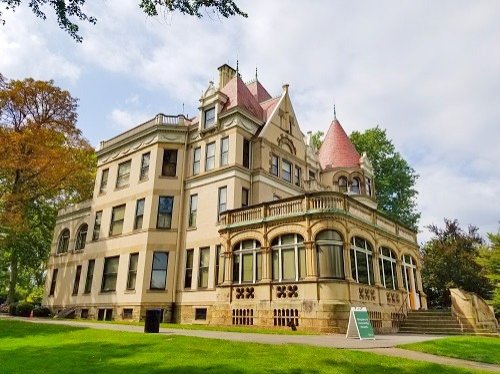
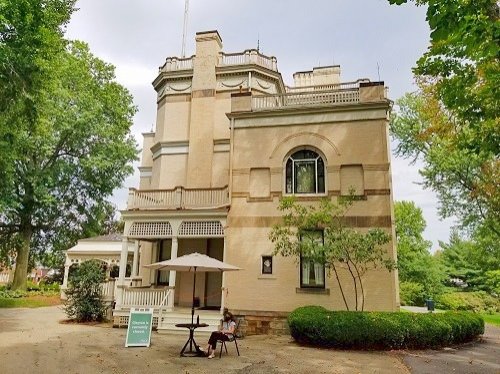
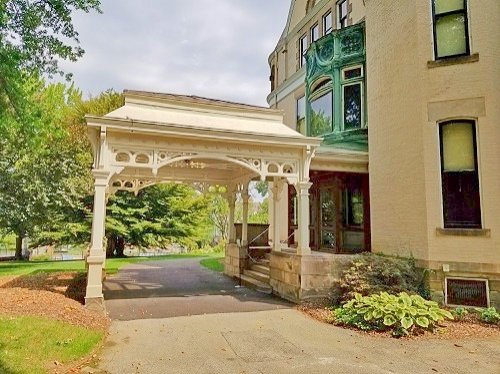
- the Frick Art Museum – large collection of Renaissance and Baroque bronzes, nineteenth-century European and Late Medieval and Renaissance paintings, photographs, prints, and costumes
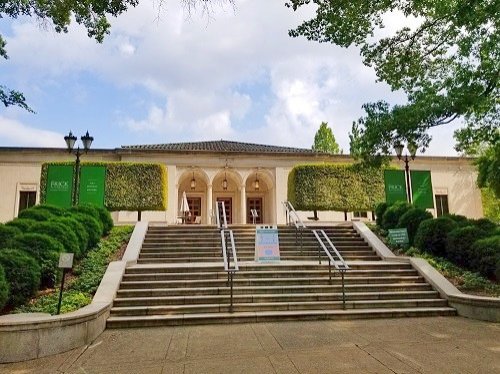

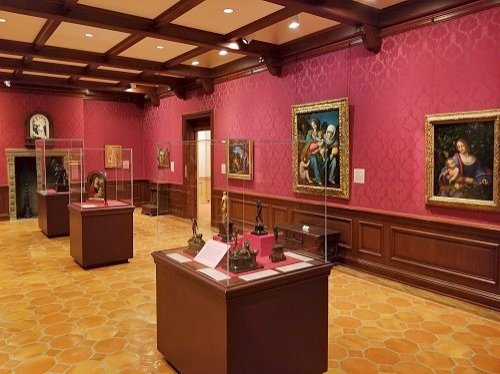

- the Car and Carriage Museum – many historic cars from 1881 to 1940
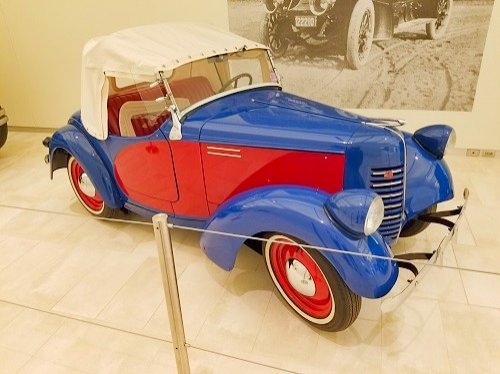



- the Greenhouse - rebuilt based on the original 1897 structure; a variety of flowers and vegetables are grown - many used for the foods in the Café.




- the Frick children's playhouse – built in 1897 it was a center of activity for the Frick children; today it houses the staff offices and closed to the public
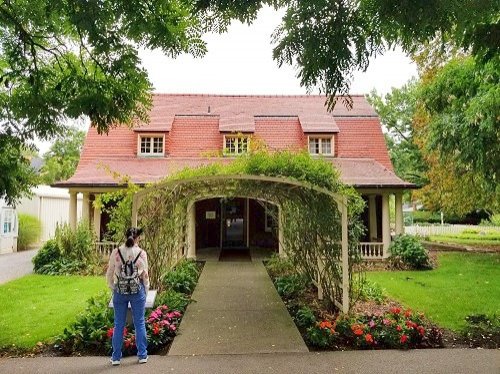
- the Café
FORT PITT MUSEUM
Fort Pitt Museum is located in Point State Park at the confluence of the Monongahela and Allegheny Rivers, where they form the Ohio River in a recreated bastion of Fort Pitt. Fort Pitt was built in 1758 by the British after razing Fort Duquesne whose outline is marked nearby with brick pavers.
The museum explains the role that Fort Pitt played during the French and Indian War and the American Revolution, the Whiskey Rebellion and the founding of Pittsburgh.
Originally established and operated by the Pennsylvania Historical and Museum Commission, it closed in 2009 due to state budget cuts. Fortunately, the Heinz Center took over and reopened the museum in 2010. Please check out the history page for more information on Fort Pitt and how Pittsburgh was established.
Nearby, you will see the Fort Pitt Block House which was constructed in 1764 as a redoubt of Fort Pitt. Fort Pitt is long gone and that makes it the oldest existing structure in all of Western Pennsylvania.
I have been at the Fort Pitt Museum twice and I think the $8 per person admission (at the time of writing) is well spent as this small museum is very informative and this is where it all began: Pittsburgh’s birthplace.
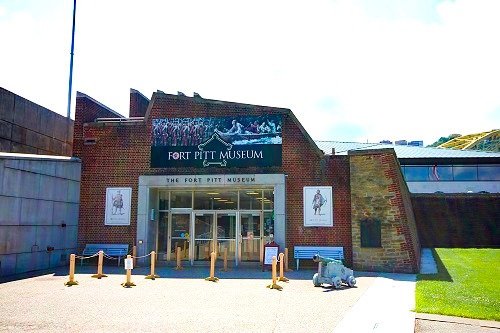



MEADOWCROFT ROCKSHELTER AND HISTORIC VILLAGE
Meadowcroft Rockshelter is a significant archaeological site 27 miles West of Pittsburgh. Archeologists have found that this site was inhabited for more than 16,000, likely even 19,000, years and that makes it the earliest known evidence of human presence and the longest sequence of continuous human occupation in the Americas. There are two older sites in Canada and Brazil, but there is no continuous human occupation. Meadowcroft Rockshelter is a rock shelter in a bluff overlooking Cross Creek, which is a tributary of the Ohio River.
The first artifacts were found here in 1955 in a groundhog burrow by the land owner Albert Miller. Miller kept the findings secret to prevent looting. After much convincing, the first scientific excavations happened in 1973 and state-of-the-art excavation techniques have been used ever since.
It is theorized that Native Americans used it for a few weeks at a time when traveling between what is now Ohio and the mountains of the Alleghenies.
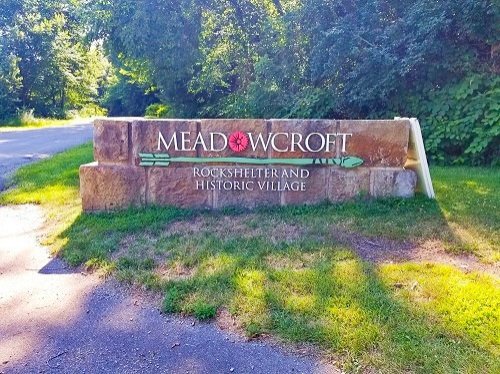
The site has these attractions:
- Meadowcroft Rockshelter – This is the mail archaeological site dates back 19,000 years. It is about a 3min drive from the visitor center and then approx. 50 steps up. Even though you can go there at any time, a guide will provide insights on what you see and show a video every hour on top of the hour. Including Q&A, this will take about 45min.


The main site behind the visitor center has these attractions, all within a 2min walk from each other:
- Frontier Trading Post – When you enter through the visitor center you will see a replica of a 1770s trading post. Here you can learn about the similarities and differences between European settlers and Eastern Woodland Indians.
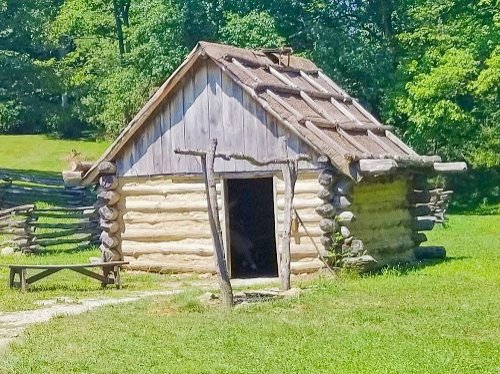

- Prehistoric Indian Village – A short trail brings you to a small fenced Monongahela Indian Village from the 16th century. Here you can learn “throwing” arrows with a special tool, not a bow.
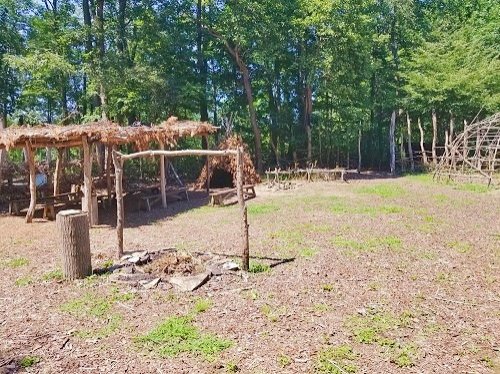

- Albert Miller Museum – this small museum displays historic vehicles including for horse racing and artifacts found at the Rockshelter site.

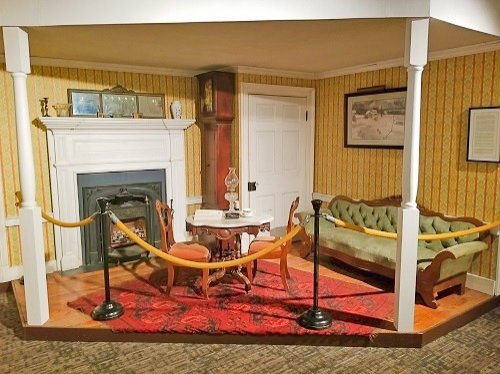


- Meadowcroft Historic Village – In four recreated historic buildings, you can experience everyday 19th century rural life




RIVERS OF STEEL: CARRIE BLAST FURNACES NATIONAL HISTORIC LANDMARK
The Carrie Furnace is a blast furnace which was part of Andrew Carnegie’s massive Homestead Steel Works along the Monongahela River. What is left today are only furnaces #6 and #7 and the hot metal bridge between them. The furnaces operated from 1907 to 1978, and were designated a National Historic Landmark in 2006.
The site is managed by the Rivers of Steel Heritage Corporation, which offers tours of the site and other activities from May to October.
If you are interested in Pittsburgh iron industry, then I highly recommend the guided tour.
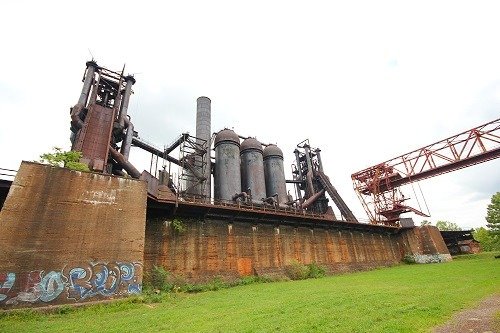
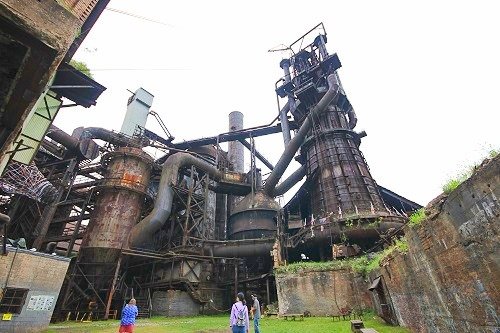


Other Museums
Pittsburgh has a lot more museums and some of them are bit weird and whacko. I am listing them below, but I have to admit that I have not been to any of them. So, please, send me review and photos if you happen to visit any of them:
- Bayernhof Museum
major collection of automated musical instruments from the 19th and 20th centuries - Bicycle Heaven
largest transportation museum in the world dedicated to bicycles, exhibiting over 3,500 bicycles and having an additional 27,000 in storage - Center for PostNatural History
focused on the collection and exposition of organisms that have been intentionally and heritably altered by humans by means including selective breeding or genetic engineering - Children’s Museum of Pittsburgh
hands-on interactive children's museum - Johnny Angel's Ginchy Stuff
Johnny Angel is a local Music Legend who worked with National Artists over a 50+ year career and exhibits music memorabilia all centered around Johnny - Kelso Museum of Near Eastern Archaeology
small museum highlighting daily life in ancient times in what are now Israel, West Bank, and Jordan including landscape and settlement patterns, architecture, agriculture and food preparation, technologies, crafts, and stylistic traditions; trade, religious observance, and memory and writing systems - Living Dead Museum
celebration of Zombies in Pop-Culture - Photo Antiquities Museum
exhibits the history of photography from 1821 until today. There are over 2,000 cameras on display - Roberto Clemente Museum
dedicated to Pittsburgh’s baseball legend, Roberto Clemente. You will see baseballs memorabilia and photos, letters and documents - Tour-Ed Mine & Museum
One of the “Coalest” Attractions in Pittsburgh! Museum and mine tour traveling 0.5 miles into the mine and tells the centuries long history of coal mining in Western PA - Trundle Manor
Tourist Trap? Art House? Gallery? Creepy Abode? What is it? It is a couple’s personal collection of unusual antiques and oddities. Tours are available by appointment only. - Western PA Model Railroad Museum
model railroad museum featuring a 40' by 100' scale model of the railroad lines connecting Pittsburgh, PA and Cumberland, MD
Author: Rudy at Backpack and Snorkel
Bio: Owner of Backpack and Snorkel Travel Guides. We create in-depth guides to help you plan unforgettable vacations around the world.
Other popular Purple Travel Guides you may be interested in:
Like this Backpack and Snorkel Purple Travel Guide? Pin these for later:





